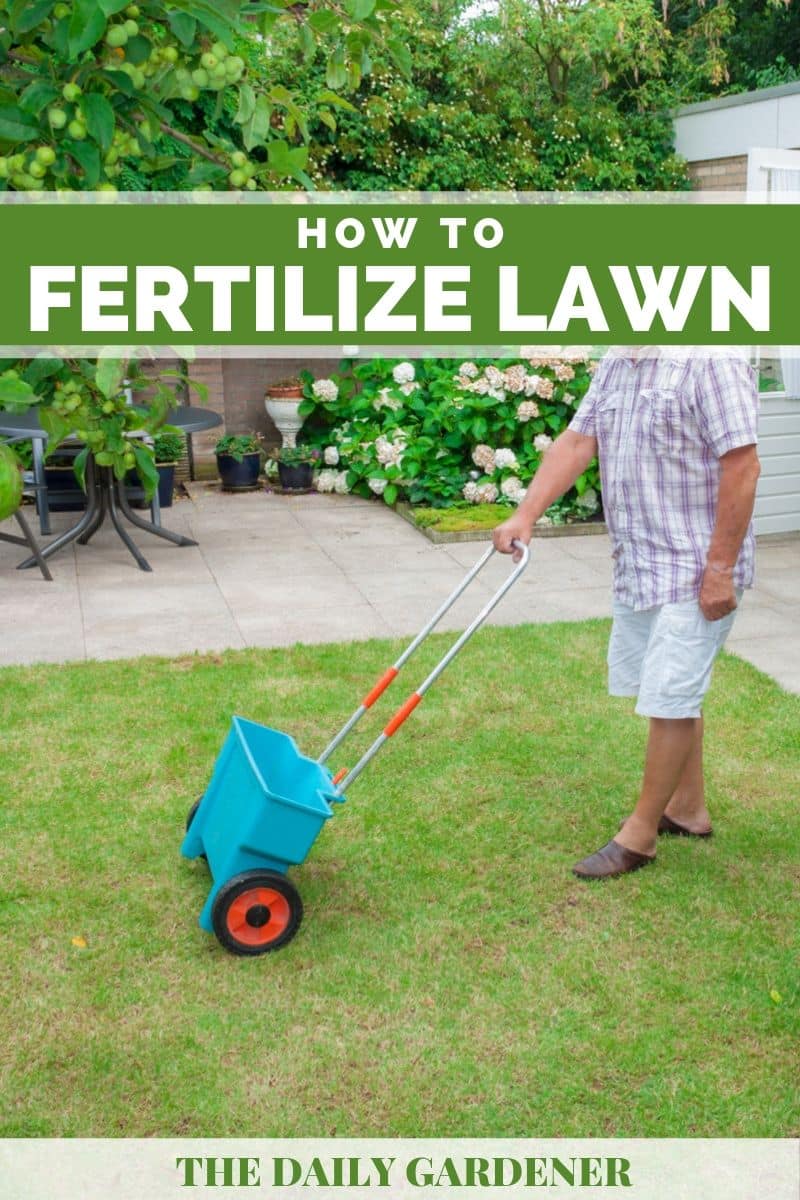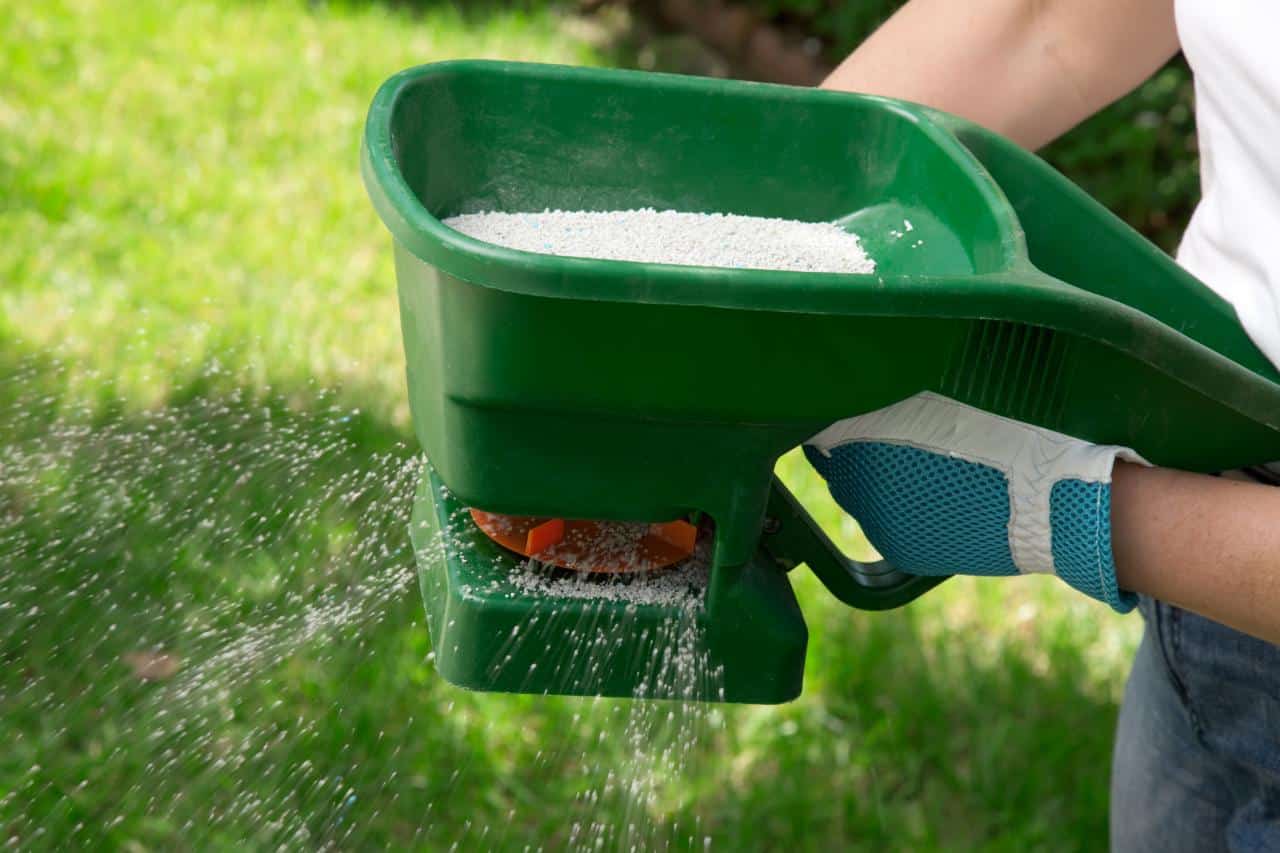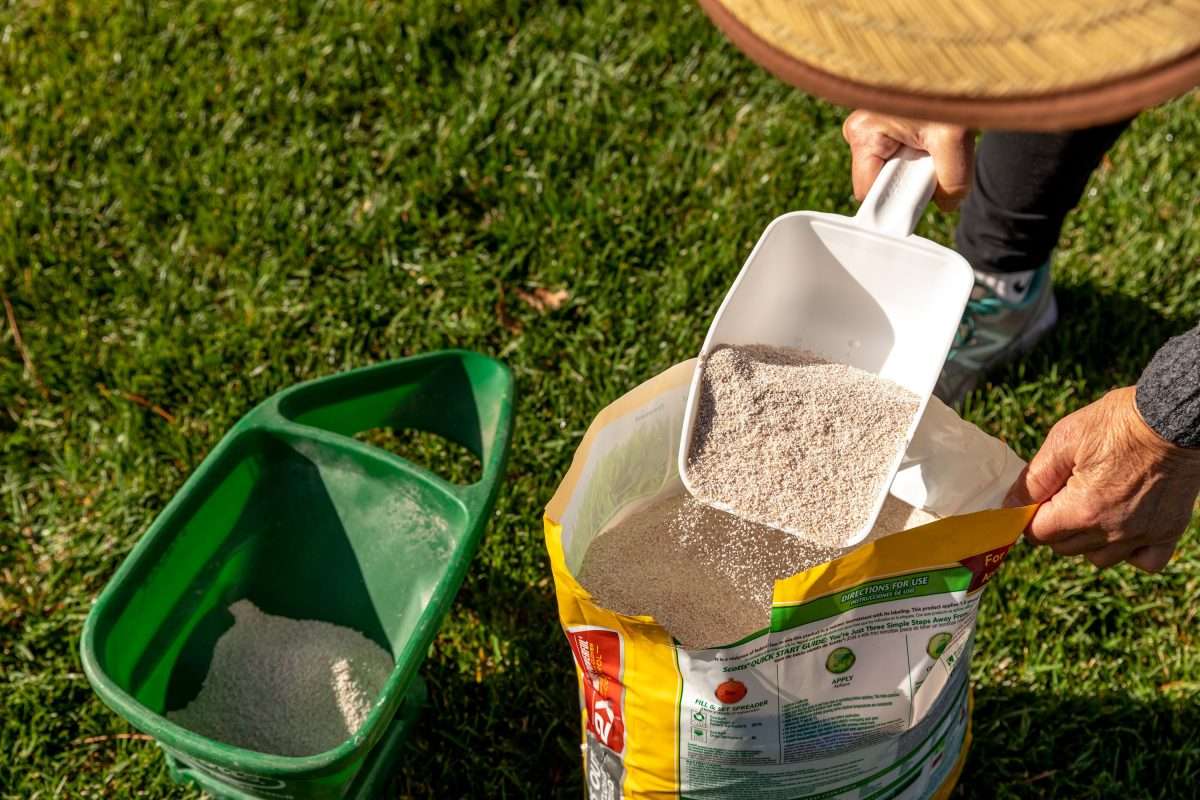Substantial Late Fall Application
A slow release material or organic fertilizer is helpful in the fall months before the winter comes on to give the lawn what it needs to stay as healthy as possible through winter months. In very snowy winters, this wont be possible, but the fertilizer will slowly release, ensuring some will be left for the early Spring, starting the cycle again!
How Often You Should Apply Fertilizer To Your Lawn
Though fertilizer has its benefits, you dont want to overdo it. A full feeding is recommended at least 5-6 times per year. You want to feed your lawn when its growing most rapidly. However, you should base the frequency on your climate and the type of grass you have. For example, cool season grasses can be fertilized in late spring, but only if necessary.
Warm season grasses, like Bermuda grass, St. Augustine, zoysia, centipede and buffalo grass, should be fertilized in spring. Depending on the amount of water your grass gets, aim to reapply your fertilizer every 6-8 weeks. Keep a watchful eye on your grass. If it looks thick and green, you can probably skip the feeding. If its starting to look brown or black, give your lawn some TLC.
Using A Handheld Broadcast Spreader
A handheld broadcast spreader works well for fertilizing small lawn areas. Walk evenly and slowly, and be sure to overlap distribution patterns slightly with each pass. A small spreader like this also works really well when you have shady areas in your lawn that require a different fertilizer rate than the sunny sections. Some fertilizers combine an herbicide with the lawn food. These products are sold as weed-and-feed lawn care products and are applied using a lawn spreader.
Don’t Miss: Can You Build A Deck Over A Concrete Patio
Why Fertilize The Lawn In Fall
Your lawn has struggled through a long, hot relentless summer. Its endured excessive heat, humidity and drought. Its been trampled by kids, dogs and overuse. Weeds, insects and diseases have taken their toll. Your lawn is hungry and tired. It wants a good meal before it settles in for a long, well-deserved winter slumber.
So why fertilize your lawn in the fall?
- This is your lawns last chance to thicken up, restoring turf density back to its early summer form.
- Fall fertilizer helps regenerate roots lost by hot, humid or dry summer weather.
- Fall fertilizing fortifies your lawn so it can better combat severe winter conditions that lie ahead.
- A good feeding fills up your lawns gas tank before going dormant. That way it has plenty of energy stored for a healthy start next spring.
How Often Should You Fertilize Your Lawn

Advice widely varies on this, as you may have already seen. The exact answer will depend on the type of fertilizer youre using a slow-release fertilizer will last longer and require fewer applications. However, a typical synthetic fertilizer will be fast-acting, but will require more frequent applications.
Most recommend a minimum of two applications per year if you’re using a slow-release fertilizer, but this is not set in stone some experts recommend up to 4-5 annual treatments. If you’re using a fertilizer which won’t last as long, you may find yourself having to apply it much more regularly to keep up appearances. The right answer for you will ultimately depend on your lawn’s soil levels as well as the fertilizer you choose.
Ian Grant, lawn care expert at National Greenhouse advises: “We would suggest treating your lawn 4 to 5 times a year. Being the end of summer your treatment should contain plenty of iron to keep the grass a deep green colour and this helps the roots grow to make the most of the late summer sun. This late summer treatment is especially useful if your garden receives lots of wear and tear by children or animals.”
Read Also: How To Get Rid Of Wasp Nest In Patio Umbrella
The Science Behind Fertilizer
While this is an extensive topic for another blog post, using the right mix and the right quantity of fertilizer is important in addition to paying attention to the best time to fertilize and should be researched before applying.
The Goldilocks mantra of avoiding extremes applies here too. Make sure not to apply too much fertilizer, nor too little. Either can cause problems with your lawns growth, health and appearance. Plus, too much fertilizer can harm the environment, with nutrient run-off into the water system and ecosystem. Looking for guidance? This is where a landscaping company that provides lawn fertilization service and other lawn care comes in.
If youd like to learn more about proper lawn care, reach out to the professionals at GreenEarth Landscape Services. Give us a call at our Panama City Beach office at 236-1959, or call our Santa Rosa Beach office at 267-0010 to set up an appointment. You can also fill out the online form on our website to schedule a consultation.
How To Apply Lawn Fertilizer
There are several ways to apply lawn fertilizer. Using a spreader provides more even coverage than fertilizing by hand. Hand fertilizing often results in burns where the fertilizer is concentrated and pale areas that dont get as much fertilizer as they should.
Broadcast or rotary spreaders are easy to use and dont cause striping like drop spreaders. The advantage to drop spreaders is that there is no chance of overthrow getting fertilizer on streets, sidewalks, or driveways. With a drop spreader, you have to make two trips over the lawn at right angles. For example, if you make your first trip over the lawn in a north-south direction, the second trip should run east to west.
After applying the fertilizer, water the lawn thoroughly. Watering rinses the fertilizer off the grass blades so that they wont burn, and it allows the fertilizer to sink down into the soil so it can get to work. Keep kids and pets off the lawn for the amount of time recommended on the label, which is usually 24 to 48 hours.
Read Also: How Do You Measure For A Patio Umbrella Replacement
What Is The Ideal Time To Fertilize A Lawn
Fertilizing the soil in the morning allows most of the nutrients to soak in the soil with the morning dew and take advantage of the cooler temperatures. It is not a good idea to apply fertilizer when the temperature is warmer.
Using granular fertilizers on dry soil and warmer weather means it will not soak in the soil, thus, having a negative effect on it. Moreover, using a liquid fertilizer in warm weather will not yield much.
Hence, wait until the temperature drops to a point where the temperature is comfortably good for the plants. Following the application of a granular quantity of fertilizer, you are free to cut the grass anytime you choose. If you are utilizing a liquid treatment, you should wait for a few days.
Watering Your Lawn After Fertilizer Application
Its important to water your lawn regularly, though grasses need infrequent doses with high amounts of water.
Your fertilizer will specify whether you need to water before or after application. Typically, granular fertilizers require light watering after application to adhere the granules to the turf.
Make sure not to over water, though, because youll wash away nutrients before your grass can absorb them.
You May Like: How To Get Dog Urine Out Of Concrete Patio
Mulch Your Grass Clippings
If youre tired of bagging grass while you mow, weve got good news. To help your lawn stay greener year-round, you can leave the grass clippings on your lawn. When grass clippings break down, they provide your lawn with beneficial nutrients. While you dont need to buy a new mower blade, it doesnt hurt to install a mulching blade so that the grass is cut into smaller pieces. Learn more about recycling grass clippings here.
What Is The Best Lawn Fertilizer For Early Spring
A longer-lasting fertilizer is typically healthier for your lawn in the spring, since it requires fewer applications. Nitrogen is the most important nutrient, but keep in mind that there are fast-release and controlled-release nitrogen sources. To check what the fertilizer contains, just look in the guaranteed analysis section on the back of the bag. Key terms to look for include controlled-release, slow-release, slowly-available, or water-insoluble nitrogen. Some specific types that may be listed include ureaform, sulfur-coated urea, polymer-coated urea, and IBDU . Several organic nitrogen sources are controlled-release if you prefer a more natural, less artificial choice. Most quality lawn fertilizers offer a balance of fast and controlled release sources to offer a fertilizer that will provide some quick color and some long-lasting nitrogen.
Read Also: How To Clean Outdoor Carpet On Patio
Should I Fertilize My Lawn Before Or After Mowing
Ideally, youll want to mow and rake before fertilizing so that excess lawn waste is removed, allowing the fertilizer to have an easier time reaching the soil. Aerating your soil before fertilizing can also help. When fertilizing a lawn, it is best to apply fertilizer after the lawn has been mowed so it has a few days to absorb the fertilizer.
When To Fertilize Your Lawn In Spring In Maryland

Dont you hate to run late? It makes you feel hectic. It makes you stress out. And who needs more stress today? No one. Though it may seem like its creeping up on you, spring erupts on the scene pretty quickly. And most of us cant wait. Those warmer days are so welcome after a stretch of gray, winter days.But almost immediately you feel late. Late to spring cleaning. Late to cleaning up your yard from winters wrath. Late. Late. Late. Watch this video about fertilizing.
Bring prepared for spring — and the growing season — can give your yard a huge advantage for the year. Your reward: a stronger, greener, and healthier lawn. The season starts with a lawn fertilizer application. Lets talk about the best time to begin this process for the best results.
You May Like: How Much Is A Screened In Gazebo
Apply Lawn Fertilizer In Spring
Deciding exactly when to apply lawn fertilizer depends on where you live. According to Scotts, you should apply lawn fertilizer between February and April when your grass starts to green up and begins to actively grow. Essentially, if it looks like your grass is ready for its first mowing of the season, then it’s ready for lawn fertilizer.
Giving your grass a good dose of lawn fertilizer in the spring sets the stage for a healthy growing season. It strengthens the roots and gives the grass a boost of nutrients to sustain it as it grows. The type of fertilizer you need depends on what type of grass you have and if you want to address other problems, such as weed prevention, or kill pests, like fire ants.
If you’re not sure what type of fertilizer to use, you can speak with your local garden center expert to find out what works best for your grass. Are you not sure what type of grass you have? Cut a small sample and take it with you to show the garden center expert.
How Often Do You Need To Fertilize Your Grass
Both the environment where you live and the kind of grass that you have will influence the quantity and sort of fertilizer you should apply to your lawn. Fertilizing should be done in the fall for grasses requiring a chilly growing season, whereas fertilizing should be done in the spring for grasses with a warm growing season. Fertilization of warm-season grasses, such as Bermuda, St. Augustine, zoysia, centipede, and buffalo, should take place in the spring.
Other types of warm-season grasses should also get fertilization at this time. The frequency of fertilizer applications should range from every six to eight weeks and be based on the amount of rainfall that your lawn gets.
Maintain a close watch on the state of your lawns health. If the plant seems to have enough nutrition, further feeding is not required. If you see that your grass is starting to look brown or even black, give it a good feeding.
Recommended Reading: How To Put In A Sliding Patio Door
The More You Know The More Your Grass Will Grow Here Are The Best Ways To Maximize Your Lawn Fertilization Schedule
Understanding when and how to fertilize your lawn is a major component to maintaining a healthy, lush yard. Fertilizers give your lawn a healthier root system while eating up unhealthy nutrients. With some simple steps, youll be on your way to having a lawn that is the envy of the neighborhood.
Best Time To Fertilize Lawn
Fertilizing in the morning allows the soil to take in the most nutrients, soak in the morning dew and take advantage of cooler temperatures. Thats the best time. Do not apply fertilizer on an abnormally hot day, not even in the morning. Wait until the weather cools back down to a normal temperature.
You can mow anytime after fertilizing with a granular treatment. With a liquid treatment, wait a day or two.
Shutterstock
Also Check: How To Make Pergola Waterproof
Best Times To Fertilize Your Lawn Per Season
The kind of grass in your yard will determine when you should apply fertilizer to your lawn. Most of the United States has grass that grows during the cold or warm seasons. So, as a general rule, fertilizer should be sprayed during the spring seasons. This environment supports the growth of plants with leaves and flowers.
In certain parts of the country, the new growth that was stimulated by fertilizing may be harmed if there is a severe cold period or even snowfall. To protect juvenile growth in these places, you should wait until after the latest frost date before applying fertilizers.
It is most effective when fertilizer is provided during the peak of a plants development cycle. In this season, seasonal plants begin to leaf out, blossom, or develop new leaves.
The beginning of spring is generally considered to be the optimal time to fertilize most plants. The following is a basic guide that will walk you through the best times of the year to fertilize your lawn based on the kind of grass that you have.
Time To Fertilize Your Lawn
- Fall is the best time to fertilize your lawn.
now
Lets compare fertilizing lawns in April versus now. After we fertilize our lawns in April, we feel rewarded when the grass greens up. But this boost of new grass blades comes at the expense of a deeper root system. You have to mow your lawn more often, and your turf may become more vulnerable to drought stress in summer.
In contrast, fertilizing in fall will:
- Repair any damage that occurred to the lawn over summer.
- Lead to a thicker turf and a stronger root system this fall.
- Help the turf to tolerate stresses such as drought, diseases and winter.
- Lead to a quicker green-up next spring.
What are you waiting for? Lets get busy!
You May Like: How To Refresh Concrete Patio
How Do You Know How Often To Fertilize Lawns
There are several important factors that come into play when youre trying to understand lawn fertilization frequency. These include:
- Lawn fertilizer application times
- The type of fertilizer you use
- How you apply your fertilizer
- How frequently you water your lawn
Ill discuss each of these points in some detail below.
How Do I Calculate How Much Fertilizer I Need

Fertilizer recommendations for lawns can be confusing to the average homeowner. These instructions are usually given in pounds of nitrogen to be applied per 1,000 square feet. Home gardeners often have difficulty converting these recommendations to the amounts needed for their selected grade of nitrogen fertilizer and their homes lawn size. Luckily, you can use online fertilizer calculators to simplify things.
Also Check: How To Fix A Patio Screen
Types Of Fertilizer To Use On Lawns
Here are the basic types of fertilizer to use on lawns:
Slow-release You dont have to use slow release fertilizers as often, but they are usually more expensive.
Fast-release You get quick results with a fast-release fertilizer, but you have to apply them in smaller amounts and more frequently. You can burn your lawn with a fast-release fertilizer if you use too much.
Weed and feed Try to identify your weeds before using a weed and feed product and make sure your weed is listed on the product label. Take special care around trees, shrubs, and garden plants.
Organic materials such as compost and manure The essential nutrients arent as concentrated in these types of materials, so you have to use a lot. Compost or dry manure before applying it to the lawn, and be aware that some manures, particularly horse manure, may contain weed seeds.
Liquid fertilizers These arent recommended because they are hard to apply evenly and require frequent applications.
When To Fertilize Your Lawn: Our Best Tips
Lawn fertilizer is like food for your grass, providing it with the nutrients it needs to grow and maintain its healthy, green glow. Each fertilizer uses a unique combination of nutrients, though most include nitrogen, phosphorus, and potassium. These ingredients create a vibrant, green lawn that resists weeds like crabgrass while creating an excellent growing environment.
While its important to fertilize your lawn, dont start throwing down these nutrients at any time of the season. Its important to consider your grass type and the environment you live in before deciding on a time to fertilize. This guide outlines the best time to fertilize your lawn, how often you should do it, and the factors that impact growth.
Read Also: The Backyard At One North